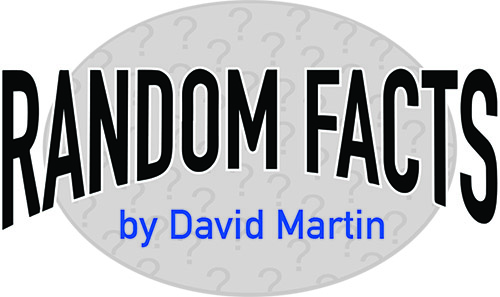By David Martin –
When the alarm went cling-clang this morning, we opened our internet tubes and found details about something we use every day but have never heard of — ablaut reduplication. According to the Society for Editing, “Ablaut reduplication is the pattern by which vowels change in a repeated word to form a new word or phrase with a specific meaning, like wishywashy or crisscross.”
The BBC further elucidates by explaining an ablaut reduplication rule: “If there are three words then the order has to go I, A, O. If there are two words then the first is I and the second is either A or O. Mish-mash, chitchat, dilly-dally, shilly-shally, tip top, hip-hop, flip-flop, tic tac, sing song, ding dong, King Kong, ping pong.”
But why? According to that clever Society for Editing, we use sounds that move from the front of your mouth to the back. Try this: speak words using the three letters ruled by ablaut reduplication (I, A, and O) and listen or sense where the sounds are coming from: bit, bat, bot or hit, hat, hot. From front to back, right? This order has become so natural for English speakers that when it’s violated (Kat Kit, anyone?), the result sounds wrong.
In linguistics, ablaut is any shift in vowel pattern, but there are a variety of reduplications. A simple or exact reduplication is telling a child that touching the stove is a no-no.
Rhyming reduplication is when the initial consonant is changed, as in hokeypokey and walkie-talkie. Similar is Yiddish schm-reduplication, in which “schm” is used to replace that first sound in a word to show sarcasm: fancy-schmancy.
The Society for Editing explains contrastive focus reduplication, repeating a “word with stress to distinguish its literal meaning from its intended sense, as in ‘Cassandra is rich, but she’s not RICH-rich.’”
See how smart you are. You know how to use ablaut reduplication and other types of reduplication without giving it a second thought. This is not so easy for people learning English. They have to be taught that present tense doesn’t always mean happening in the present, but you know “I jog” doesn’t mean you’re jogging at the moment. (Present progressive — “I am jogging” — means you’re doing it now.)
Imagine if you’re trying to pick up a new language and your teacher says you have to learn the future present tense. Huh? It’s in the future but it’s present? Yet you, smarty-pants, can employ the future present tense with ease: “My plane leaves next Friday.”



